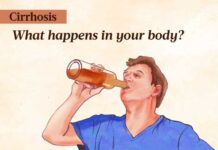
Unless you are made of the same stuff as Mother Teresa, few among us can say we have never been angry with someone to the point of feeling like we couldn’t move beyond the pain they caused us.
A cheating spouse, a childhood bully, a back-stabbing friend or a manipulative colleague — the perpetrator could be someone in your circle of family and friends, a stranger, or even yourself. The offense could be relatively small, such as making a belittling comment at an inopportune moment, or life-altering, like causing someone’s death. Regardless of the precise details, chances are you have been there and, if you’re honest, probably more than once.
If the incident in question causes you continued distress and negatively impacts your life, that’s where the f-word — forgiveness — may have a role to play, said psychologist Robert Enright, a pioneer in the field of forgiveness science and professor of educational psychology at the University of Wisconsin-Madison.
“What are your pathways of healing? And if there has been attempt, upon attempt, upon attempt, with no healing, I would gently suggest the possibility of forgiving. But it’s always the forgiver’s choice,” Enright told CNN Chief Medical Correspondent Dr. Sanjay Gupta on a December 2023 episode of the podcast Chasing Life.
Enright, who has been studying forgiveness for nearly four decades and is cofounder of the nonprofit International Forgiveness Institute, said there is plenty of evidence that shows the act has psychological benefits, including reducing anger, anxiety and depression. Forgiveness also has a positive impact on our health, including lower blood pressure, better sleep, lower levels of stress-induced inflammation and a stronger immune system.
Enright — who has worked with foreign governments, incest and rape survivors, terminally ill cancer patients, incarcerated individuals, and children in war-affected areas — said it’s not about forgive and forget; it’s about forgive and remember.
“Remember in new ways, without the rancor, without the rage welling up inside us again,” he said. “It’s like if you’ve injured your knee and at the time there’s great pain and there’s confusion. But when you look back on that, five years now down the road, you remember what happened — but it’s not with the same kind of pain.”
Of course, that’s easier said than done. To help people consciously cultivate forgiveness, Enright, also a prolific book author, developed a process model of forgiveness that lays out steps to get there. “At the very end of this (process), you are the one who is healed,” he said.
And, according to Enright, the more you forgive, the better you get at it. “Forgiveness improves the more you practice it. And if you practice forgiveness in the every-day situations of your own family, your own neighborhood, your own community, then you’re getting better,” he said.
“As you practice forgiveness in the small ways, you’re actually building up a liking of it, a familiarity (to) it, so that when the tough things of life come, you are more ready because you know the pathway, you like the pathway, and forgiveness is part of your life,” he said.
So, how do you get started? Here are Enright’s five top tips, edited for length:
Evaluate Whether It’s The Right Time To Forgive
How do you know when it’s time to forgive? It may be the opposite of what you’re thinking.
“If your anger is intense and long-lasting, and you have tried everything to heal, you might consider forgiving those who treated you unfairly,” Enright wrote in an email. “When we are treated very unjustly by others, there can be negative effects on us such as intense anger, sadness, and confusion. Sometimes the intense anger can last for many months and even many years.”
It’s normal to not be able to jump into forgiveness right away, he said. “Forgiveness occurs when we’ve settled in our heart to some degree and have had a chance to be angry. And for those who are ready — some will be, many will not — the pathway of forgiveness should be freely chosen, and it can be deeply healing.”
Understand What Forgiveness Is — And Isn’t
Forgiving isn’t excusing the wrong, necessarily reconciling with the other person or abandoning the quest for fairness, Enright said. Rather, “to forgive is to offer mercy toward those who acted unfairly.”
This is done in three steps. The first is to cultivate over time new thought patterns about the person who harmed you. Next is to cultivate over time fewer negative and more positive feelings about the person — which Enright said “cannot be simply willed into existence.”
The third step is to engage in fewer negative and more positive behaviors toward the person. This includes “do no harm” to the other (for example, don’t roll your eyes when they talk) and maybe even offering a kind word about the person to others.
Expect The Process To Take Time
For some people, forgiving comes quickly, even spontaneously, but for most, Enright said, “the pathway to forgiving is like a journey that you walk each day and this process can take time.”
To start on that pathway, he suggested using his organization’s process model. It’s broken down into four phases: examining the effects on you from the person’s injustice; committing to start forgiving the person; expanding your understanding of the other person, including their wounds and their inherent worth; and finding new meaning in your suffering.
Build Up Your Forgiveness Muscle
Don’t expect to become Mother Teresa overnight.
“Start small with those people who have hurt you a little and build up to those who have deeply hurt you,” Enright said.
As you practice forgiving on a daily basis, you can expect to reap the physical benefits.
“When you practice forgiveness, the amygdala in the brain reduces signals to the hypothalamus, which eases signals to the pituitary glands, which reduce excessive cortisol levels. This can result in lower levels of anxiety and depression,” he said.
Expect The Unexpected
As you deepen your forgiveness practice, you may experience paradoxical results, Enright said.
“As you offer the positive qualities of kindness and even love to those who were unfair, then you yourself can experience the positive qualities of increased self-esteem, more hope for the future, and improved relationships,” he said.
Because you are activating and strengthening different regions of your brain, Enright said, practicing forgiveness can also lead to better problem-solving and decision-making, as well as help you grow in empathy and deepen your emotional recovery.
“The one who hurt you no longer has power over you in that your heart is no longer being controlled by this person’s past actions,” he said.
We hope these five tips help you move closer to having a more forgiving brain. Listen to the full episode here to learn more about the steps to forgiveness, including how to forgive yourself, and find out if everyone has the capacity to forgive. And join us at the Chasing Life podcast for other episodes with Dr. Gupta.
Important Notice: This article was originally published at https://edition.cnn.com by Andrea Kane, CNN where all credits are due. CNN Audio’s Eryn Mathewson contributed to this report.
Disclaimer
The watching, interacting, and participation of any kind with anything on this page does not constitute or initiate a doctor-patient relationship with Dr. Farrah™. None of the statements here have been evaluated by the Food and Drug Administration (FDA). The products of Dr. Farrah™ are not intended to diagnose, treat, cure, or prevent any disease. The information being provided should only be considered for education and entertainment purposes only. If you feel that anything you see or hear may be of value to you on this page or on any other medium of any kind associated with, showing, or quoting anything relating to Dr. Farrah™ in any way at any time, you are encouraged to and agree to consult with a licensed healthcare professional in your area to discuss it. If you feel that you’re having a healthcare emergency, seek medical attention immediately. The views expressed here are simply either the views and opinions of Dr. Farrah™ or others appearing and are protected under the first amendment.
Dr. Farrah™ is a highly experienced Licensed Medical Doctor certified in evidence-based clinical nutrition, not some enthusiast, formulator, or medium promoting the wild and unrestrained use of nutrition products for health issues without clinical experience and scientific evidence of therapeutic benefit. Dr. Farrah™ has personally and keenly studied everything she recommends, and more importantly, she’s closely observed the reactions and results in a clinical setting countless times over the course of her career involving the treatment of over 150,000 patients.
Dr. Farrah™ promotes evidence-based natural approaches to health, which means integrating her individual scientific and clinical expertise with the best available external clinical evidence from systematic research. By individual clinical expertise, I refer to the proficiency and judgment that individual clinicians acquire through clinical experience and clinical practice.
Dr. Farrah™ does not make any representation or warranties with respect to the accuracy, applicability, fitness, or completeness of any multimedia content provided. Dr. Farrah™ does not warrant the performance, effectiveness, or applicability of any sites listed, linked, or referenced to, in, or by any multimedia content.
To be clear, the multimedia content is not intended to be a substitute for professional medical advice, diagnosis, or treatment. Always seek the advice of your physician or other qualified health providers with any questions you may have regarding a medical condition. Never disregard professional medical advice or delay in seeking it because of something you have read or seen in any website, video, image, or media of any kind. Dr. Farrah™ hereby disclaims any and all liability to any party for any direct, indirect, implied, punitive, special, incidental, or other consequential damages arising directly or indirectly from any use of the content, which is provided as is, and without warranties.








